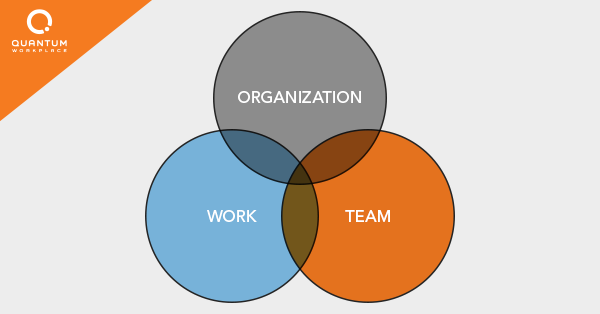What is Employee Engagement? Effective ideas to improve it
Business growth is based on activity.
But without employees committed to growth, you can't establish positive activity levels. Employees are the primary force that determines the quality of a workplace and the future of an organization.
In today's competitive marketplace, employee engagement has become a critical driver of business success. This is an increasingly popular topic among HR and C-level managers.
What is Employee Engagement?Employee engagement is the connection that employees feel with their workplace. High levels of engagement will drive talent retention, foster loyalty and improve business performance. Ultimately, it's about translating perceptions into numbers, numbers into insights, and insights into actionable insights.
Organizations use employee engagement software to gain feedback and derive actionable insights that drive employee success at every level. They recognize the value of implementing effective employee engagement strategies to invest in human capital and achieve a high return on investment (ROI) for the business.
Sample Employee Engagement ModelThere are many types of employee engagement models that measure different aspects of engagement in a company. These aspects mainly relate to the following three areas:
Employee commitment to the organization Employee engagement with the team Employee engagement in work
When employees are engaged at every level, the organization will have a more dynamic and efficient workflow. For example, a sample employee engagement model would include measuring the outcome and engagement drivers associated with each of these levels.
The engagement result helps reveal the current state of the engagement:
I find my work engaging. My immediate colleagues are committed to the overall goals of this organization. I recommend my organization as a great place to work.Engagement Drivers are actionable survey questions that help organizations maintain, improve, or drive engagement results:
I feel comfortable sharing feedback when I have it. If I contribute to the success of the organization, I know I will be recognized. Teams work well with other teams. Why is employee engagement important?When employees are engaged, organizations are more successful. When disengaged, organizations suffer. Engaged employees work harder, stay longer, take more initiative and motivate others to do the same.
Study conducted by Gallup showed that engaged employees produce better business results, including:
41% less absenteeism 10% higher customer retention and engagement 21% more profitability 20% more sales 17% more productivity 24% less turnover (for companies with high turnover) 59% less turnover (for low turnover companies) 70% fewer security incidentsThis applies to all industries, all company sizes and locations, and in good and bad economic times.

Business growth is based on activity.
But without employees committed to growth, you can't establish positive activity levels. Employees are the primary force that determines the quality of a workplace and the future of an organization.
In today's competitive marketplace, employee engagement has become a critical driver of business success. This is an increasingly popular topic among HR and C-level managers.
What is Employee Engagement?Employee engagement is the connection that employees feel with their workplace. High levels of engagement will drive talent retention, foster loyalty and improve business performance. Ultimately, it's about translating perceptions into numbers, numbers into insights, and insights into actionable insights.
Organizations use employee engagement software to gain feedback and derive actionable insights that drive employee success at every level. They recognize the value of implementing effective employee engagement strategies to invest in human capital and achieve a high return on investment (ROI) for the business.
Sample Employee Engagement ModelThere are many types of employee engagement models that measure different aspects of engagement in a company. These aspects mainly relate to the following three areas:
Employee commitment to the organization Employee engagement with the team Employee engagement in work
When employees are engaged at every level, the organization will have a more dynamic and efficient workflow. For example, a sample employee engagement model would include measuring the outcome and engagement drivers associated with each of these levels.
The engagement result helps reveal the current state of the engagement:
I find my work engaging. My immediate colleagues are committed to the overall goals of this organization. I recommend my organization as a great place to work.Engagement Drivers are actionable survey questions that help organizations maintain, improve, or drive engagement results:
I feel comfortable sharing feedback when I have it. If I contribute to the success of the organization, I know I will be recognized. Teams work well with other teams. Why is employee engagement important?When employees are engaged, organizations are more successful. When disengaged, organizations suffer. Engaged employees work harder, stay longer, take more initiative and motivate others to do the same.
Study conducted by Gallup showed that engaged employees produce better business results, including:
41% less absenteeism 10% higher customer retention and engagement 21% more profitability 20% more sales 17% more productivity 24% less turnover (for companies with high turnover) 59% less turnover (for low turnover companies) 70% fewer security incidentsThis applies to all industries, all company sizes and locations, and in good and bad economic times.
What's Your Reaction?















![Three of ID's top PR executives quit ad firm Powerhouse [EXCLUSIVE]](https://variety.com/wp-content/uploads/2023/02/ID-PR-Logo.jpg?#)







